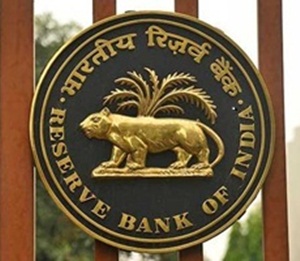The Monetary Policy Committee (MPC) of the Reserve Bank of India (RBI) at its meeting today (6 August 2021) decided to keep the policy repo rate under the liquidity adjustment facility (LAF) unchanged at 4.0 per cent.

The MPC decision is on the basis of an assessment of the current and evolving macroeconomic situation, an RBI release stated.
Consequently, the reverse repo rate under the LAF remains unchanged at 3.35 per cent and the marginal standing facility (MSF) rate and the Bank Rate at 4.25 per cent.
The MPC also decided to continue with the accommodative stance as long as necessary to revive and sustain growth on a durable basis and continue to mitigate the impact of SARS-CoV-2 pandemic on the economy, while ensuring that inflation remains within the target going forward.
RBI said these decisions are in consonance with its objective of achieving the medium-term target for consumer price index (CPI) inflation of 4 per cent within a band of +/- 2 per cent, while supporting growth.
RBI said the MPC’s main considerations have been the pace of economic recovery - both domestic and global – as well as the liquidity positop and its impact on inflation, the release stated.
Since the MPC’s meeting during 2-4 June 2021 the pace of global recovery has been moderating with the resurgence of infections in several parts of the world, especially from the delta variant of the virus. Countries that are ahead in vaccination and have been able to provide or maintain policy stimulus are rebounding strongly. Growth in other economies remains subdued and vulnerable to new waves of infections. The momentum in global trade volumes has also been slowing in Q2 of 2021, with elevated shipping charges and logistics costs posing headwinds.
The hardening of commodity prices, particularly that of crude oil, has come as a big shock for the pandemic-hit economies. Headline inflation has ratcheted up in several advanced economies (AEs) as well as most emerging market economies (EMEs), prompting a few central banks in EMEs to tighten monetary policy. In contrast, sovereign bond yields have softened across AEs as markets seem to have acquiesced to the views of central banks that inflation is largely transitory. In EMEs, bond yields remain relatively high on inflation concerns and country-specific factors. In the foreign exchange market, EME currencies have depreciated in the wake of portfolio outflows since mid-June as risk appetite ebbed, while the US dollar strengthened.
On the domestic front, RBI noted that economic activity, especially in the agriculture sector, picked up pace in June-July as some states eased pandemic containment measures.
Industrial production also expanded in double digits year-on-year in May 2021 on top of the massive jump in April, but it was still 13.9 per cent below its May 2019 level. High-frequency indicators such as e-way bills, toll collections, electricity generation, air traffic, railway freight traffic, port cargo, steel consumption, cement production, import of capital goods, passenger vehicle sales, two wheeler sales posted strong growth in June-July.
Initial quarterly results of non-financial corporates for Q1:2021-22 show healthy growth in sales, wage growth and profitability led by information technology firms.
Headline CPI inflation plateaued at 6.3 per cent in June after rising by 207 basis points in May 2021. Food inflation increased in June primarily due to an uptick in inflation in edible oils, pulses, eggs, milk and prepared meals and a pick-up in vegetable prices. Fuel inflation moved into double digits during May-June 2021 as inflation in LPG, kerosene, and firewood and chips surged. After rising sharply to 6.6 per cent in May, core inflation moderated to 6.1 per cent in June.
Liquidity in the system remained ample, with average daily absorption under the LAF increasing from Rs5.7 lakh crore in June to Rs6.8 lakh crore in July and further to Rs8.5 lakh crore in August so far (up to 4 August 2021).
RBI, however, has conducted auctions of government securities for a cumulative amount of Rs40,000 crore in Q2 of 2021-22 so far under the secondary market government securities acquisition programme (G-SAP) evened liquidity across illiquid segments of the yield curve.
RBI will be conducting open market purchase of government securities of Rs25,000 crore on 12 August 2021 under the G-sec Acquisition Programme (G-SAP 2.0).























